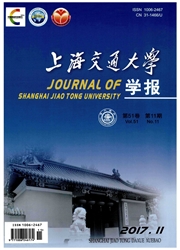

 中文摘要:
中文摘要:
为深入研究机械弹性车轮侧向力学特性,基于理论及数值仿真的方法对车轮侧向刚度影响因素进行了分析.利用能量法建立了鞣轮单元侧向刚度理论模型,并得到影响车轮侧向刚度的主要因素.在简化机械弹性车轮结构的基础上,建立了车轮三维有限元模型,并验证了模型的有效性.针对不同垂向载荷、鞣轮几何结构参数以及橡胶层剪切模量,对机械弹性车轮进行了侧向刚度特性的仿真试验.计算结果表明:随着垂向载荷、橡胶层剪切模量的增大,车轮侧向刚度均增大;随着鞣轮断面高宽比的增大,车轮侧向刚度呈减小趋势.通过对车轮侧向刚度影响因素的理论及数值分析,可为优化车轮刚度特性及改进车轮结构等方面的研究提供参考.
 英文摘要:
英文摘要:
In order to further investigate lateral stiffness properties of mechanical elastic wheel, theoretical and numerical analysis on influencing factors was carried out. Theoretical model of lateral stiffness proper- ties of tire bead unit was established based on energy method, and main factors influencing the wheel later- al stiffness were obtained. On the basis of simplified structure of mechanical elastic wheel, a three-dimen- sional finite element model was established, and the corresponding simulation programs were designed for different vertical loads, structure parameters of tire bead and shear moduli of rubber layer. By using finite element analysis software Abaqus, numerical simulation calculation on lateral stiffness properties of me- chanical elastic wheel was completed. And test data of prototype of mechanical elastic wheel were used to verify the validity of the wheel finite element model. The calculation results show that as vertical load or shear modulus of rubber layer increases, lateral stiffness of mechanical elastic wheel increases~ with the in- crease of the depth-width ratio of tire bead section, the wheel lateral stiffness shows a trend of decrease. Theoretical and numerical research on lateral stiffness of mechanical elastic wheel, reference was provided for optimizing wheel stiffness properties and improving wheel structure.
 同期刊论文项目
同期刊论文项目
 同项目期刊论文
同项目期刊论文
 期刊信息
期刊信息
